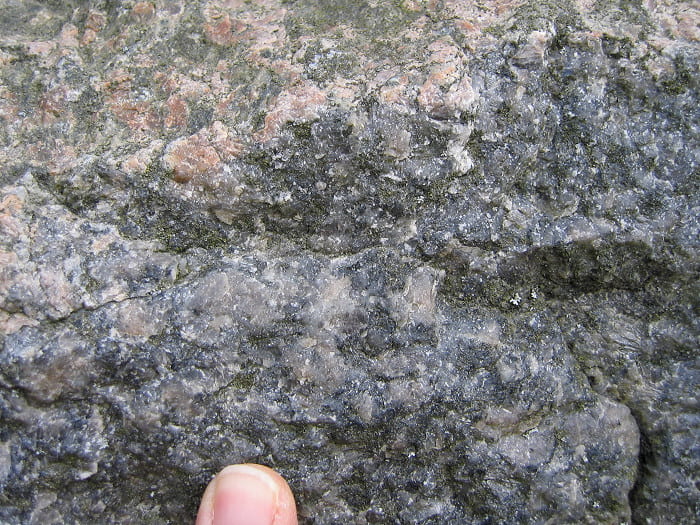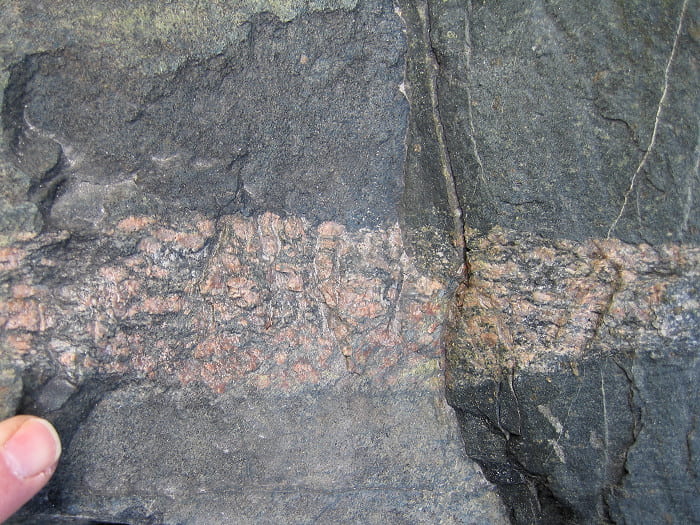Stop 7: Danvers alkali gabbro and cumulate syenites
This outcrop is mostly made up of alkaline gabbro, though much of it is inhomogeneous and much looks more dioritic than gabbroic to me. The story here is that the gabbro was actually crystallizing alkali feldspar, which then segregated by flow or flotation processes to produce lumps of massive syenite, syenite layers, and dispersed alkali feldspar-rich mafic rock. The syenite has been dated as being Late Ordovician. Some of the mafic rock has sparsely dispersed alkali feldspars.
I must admit that I never expected a mafic magma would crystallize alkali feldspar as any sort of early or intermediate phase. There doesn’t seem to be a great deal else that is coarse in this rock, like biotite, amphibole, or pyroxene phenocrysts. I wonder if the alkali feldspars are not simply disaggregating syenite xenoliths or mixed magmas, with disaggregation, rather than segregation. The outcrop is somewhat of a sheared mess, because it’s close to the Bloody Bluff Fault Zone, not far to the west, which separates the Avalon terrane from the Nashoba terrane. In any case, this outcrop is supposed to have zircons up to 2 mm long, though I didn’t see any.

This is one of the syenite lumps that is supposed to be from segregation of K-feldspar crystallizing from the mafic magma. Forgive me for being skeptical, but isn’t that quartz I see? But what do I know? If you want to argue, get the field trip guide and go to the outcrop.

Here is a K-feldspar-rich mass that has been deformed in a shear zone. I interpret the textures on this surface to indicate down to the left movement sense.

Here is more of the K-feldspar-rich rock, with mafic rock above that only has sparse alkali feldspar (but they are certainly there, and one or two are visible here).

This is another syenitic layer (or block or dike? Again, is that quartz I see?) flanked by alkali feldspar-poor mafic rock. In the mafic rock alkali feldspars are sparse but a few are visible here.

Another syenitic block at the image top, and biotite-rich mafic rock below. There are some small patches of fine-grained dark rock: one near the image center, a few bits to the lower right, and a bit slightly below center on the left. There was some discussion as to the origin of these fine-grained rocks: pseudotachylites or little basaltic dikes. There was a narrow, fine-grained dike ~0.5 m to the right of this image, so that is what I think these are. However, they are not aligned in any particular plane, or en echelon, or in some other ordered way as one might expect.

OK, here’s some quartz, but in this case it is in a quartz-cored pegmatite that cuts the mafic rock.
